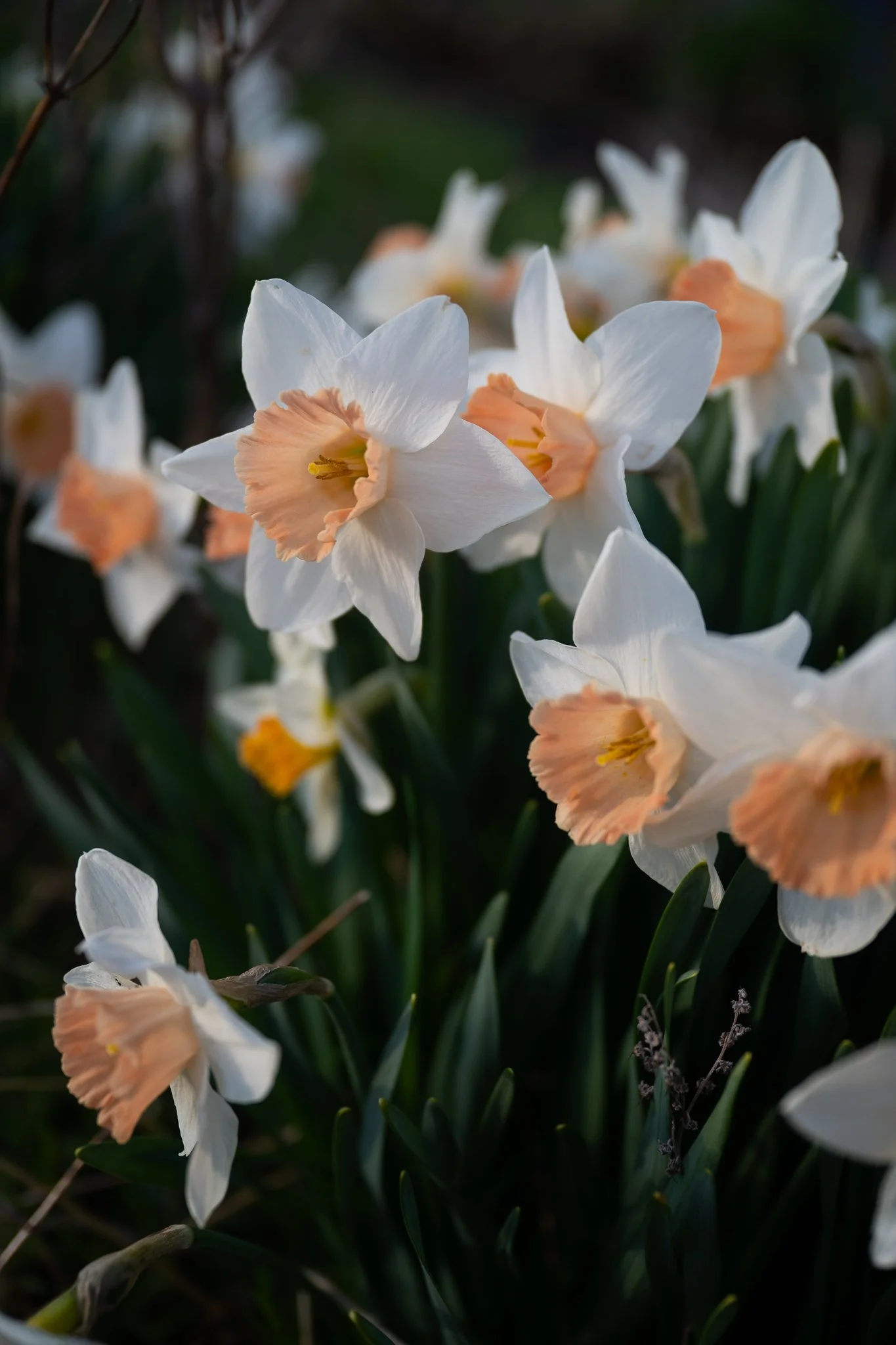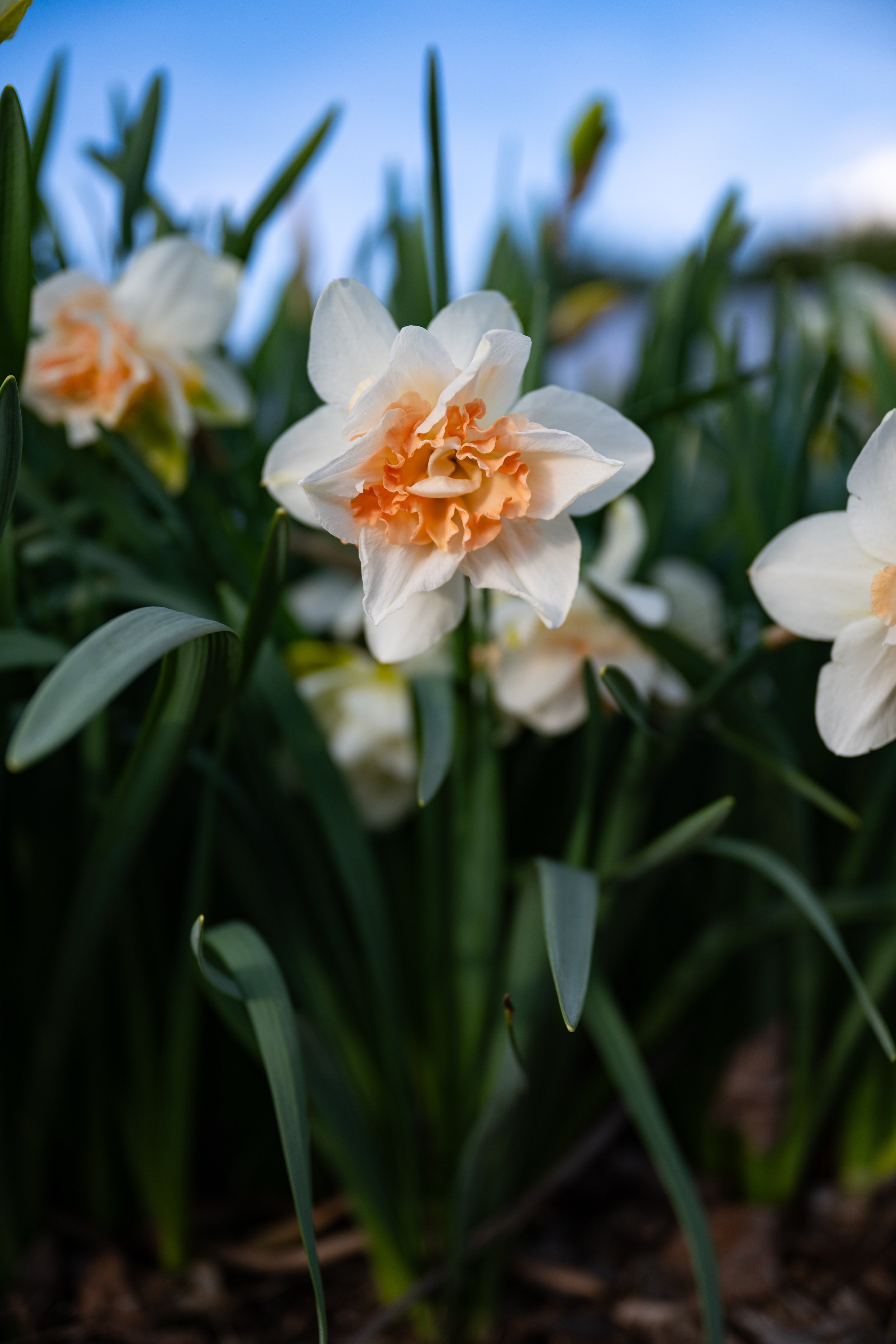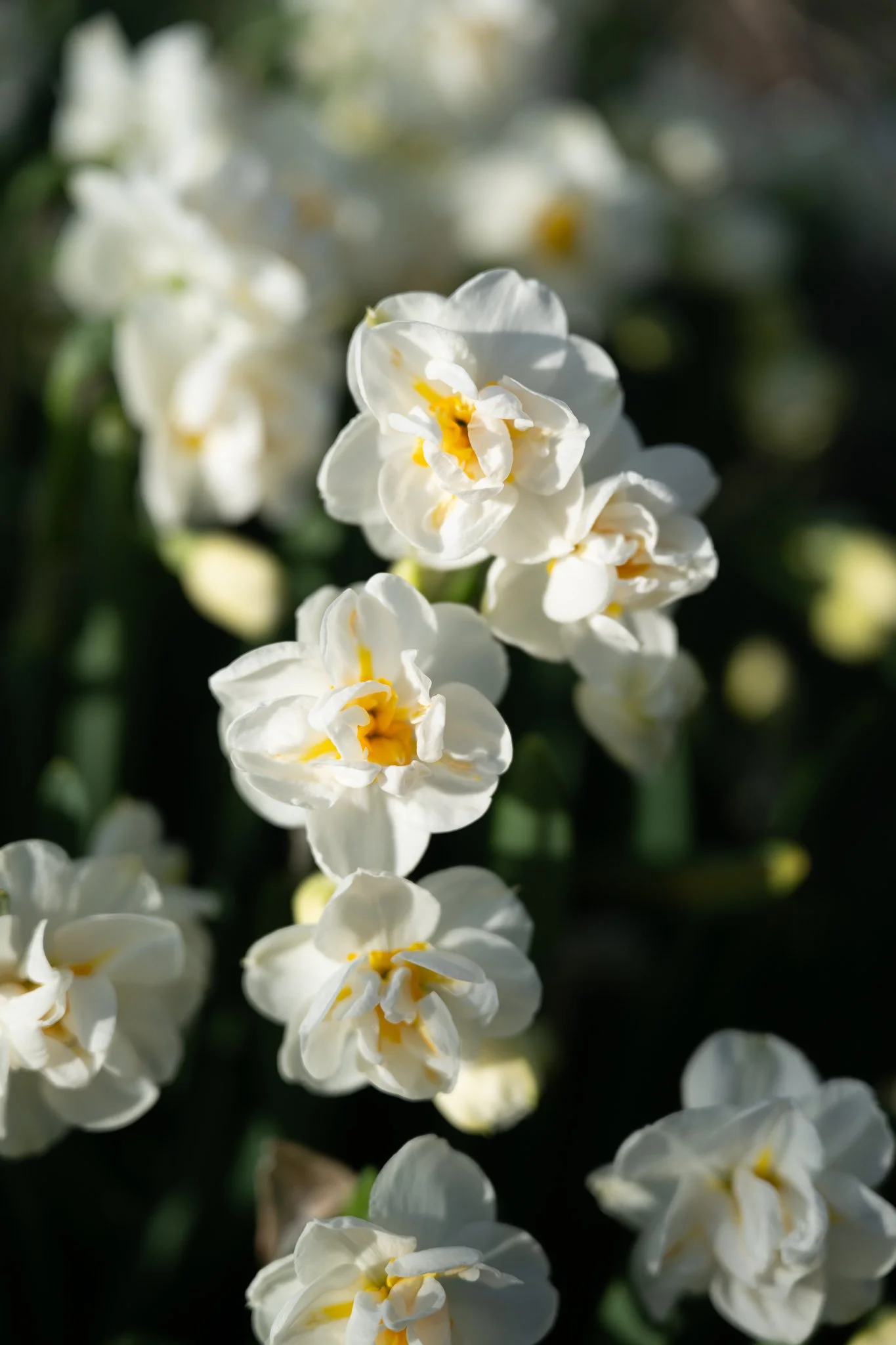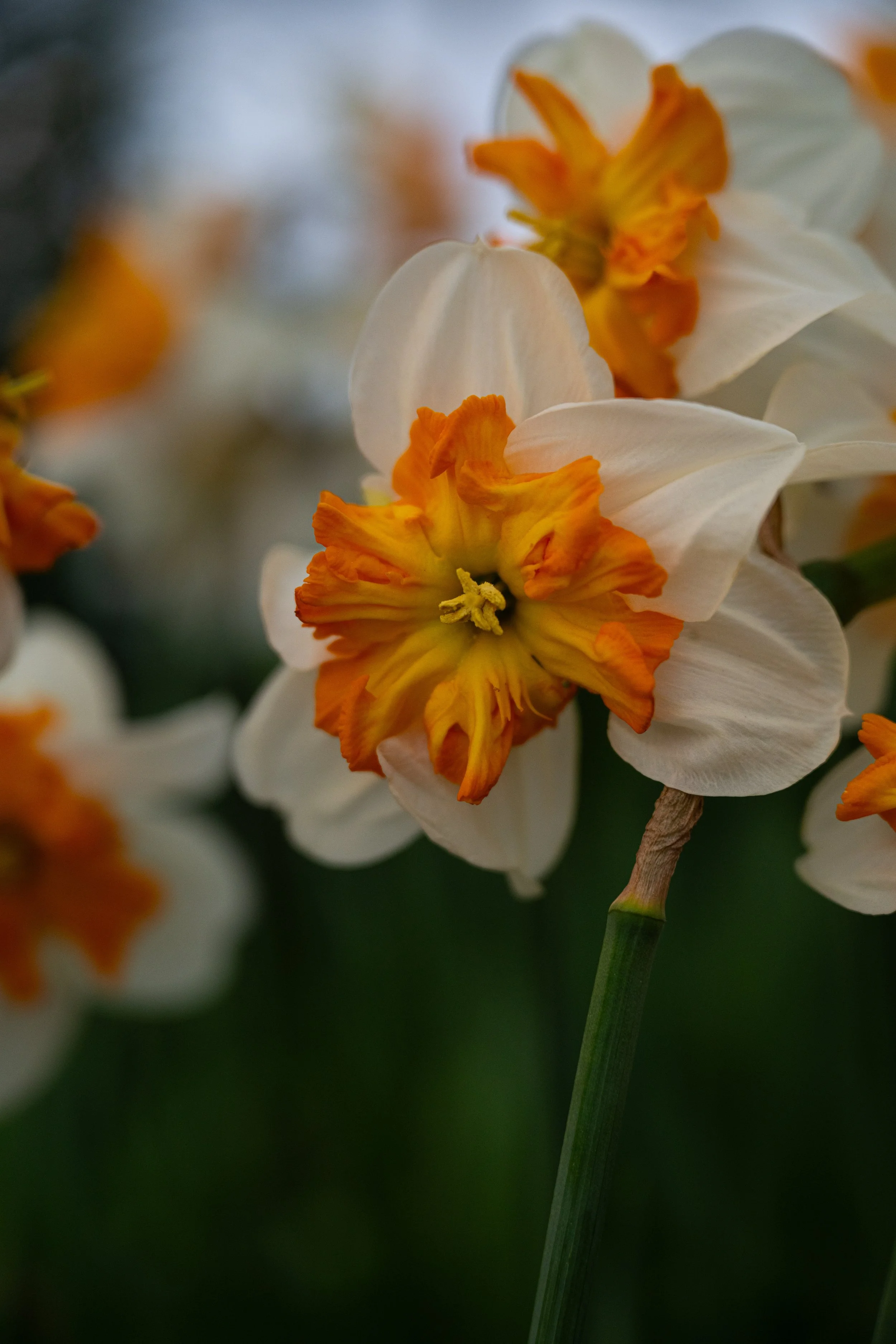Meet the Daffodil Divisions
Daffodils (Narcissus) are among the earliest flowers of spring and a reliable, deer-resistant, perennial crop for cut flower growers. With proper planning, they can be a low-maintenance and profitable part of your spring flower lineup.
Overview of Daffodil Classification
Daffodils are classified into 13 divisions based on flower form and heritage. Understanding these divisions helps you choose the best varieties for cut flower production, considering stem length, bloom size, vase life, and ease of harvest.
Division 1: Trumpet
Description: One flower per stem. The trumpet (corona) is as long or longer than the petals (perianth).
Popular Varieties: ‘Dutch Master’, ‘Mount Hood’
Division 2: Large-Cupped
Description: One flower per stem. Cup is more than one-third but less than equal to petal length.
Popular Varieties: ‘Salome’, ‘Ice Follies’, ‘Professor Einstein’, ‘Pink Charm’
‘Salome’ Daffodil (Division 2, Large Cupped)
Division 3: Small-Cupped
Description: One flower per stem. Cup is no more than one-third the length of the petals.
Popular Varieties: ‘Barrett Browning’, ‘Dreamlight’
Division 4: Double
Description: Fully double blooms with extra petals or petaloid stamens.
Popular Varieties: ‘Tahiti’, ‘Replete’, ‘Cheerfulness’, ‘Flower Parade’, ‘Dick Wilden’, ‘Bridal Crown’
Note: Double varieties can be susceptible to “petal greening” a condition in which very cold temperatures during the growing period affect their petal development, leaving stunted petals streaked with green marks.
‘Replete’ daffodil (Division 4, double)
‘Bridal Crown’ daffodil (Division 4, Double)
Division 5: Triandrus
Description: Usually 2–6 nodding flowers per stem, reflexed petals.
Popular Varieties: ‘Thalia’, ‘Petrel’
Division 6: Cyclamineus
Description: One nodding flower per stem; strongly reflexed petals.
Popular Varieties: ‘February Gold’, ‘Jetfire’
Note: These varieties are better suited to potted production. We love them forcing in small pots that we offer to supermarket and farm stand or farmer’s market customers in late winter as a taste of spring to come.
Division 7: Jonquilla
Description: Multiple fragrant flowers per stem, narrow petals.
Popular Varieties: ‘Quail’, ‘Sweetness’
Division 8: Tazetta
Description: Clustered blooms per stem, often fragrant.
Popular Varieties: ‘Geranium’, ‘Avalanche’, ‘Minnow’
Division 9: Poeticus
Description: One flower per stem, small cup often edged in red.
Popular Varieties: ‘Actaea’, ‘Cantabile’
Division 10: Bulbocodium
Description: "Hoop petticoat" daffodils; very small and delicate.
Popular Varieties: ‘Golden Bells’
Division 11: Split-Corona
Description: Cup is split and flares like butterfly wings or a collar.
Popular Varieties: ‘Cassata’, ‘Orangery’, ‘Parisienne’
‘Parisienne’ daffodil (Division 11, Split Corona)
Division 12: Miscellaneous
Description: Varieties that don't fit other divisions.
Division 13: Species & Wild Types
Description: Wild forms and close relatives.
Popular Varieties: Narcissus pseudonarcissus
We’re in love with daffodils and their wide range of forms. There is so much more to them than the giant trumpets that are common to most landscape design. Many people shrug them off (tulips, too) without realizing how broad their flower spectrum is. We hope you enjoy exploring them, too.





